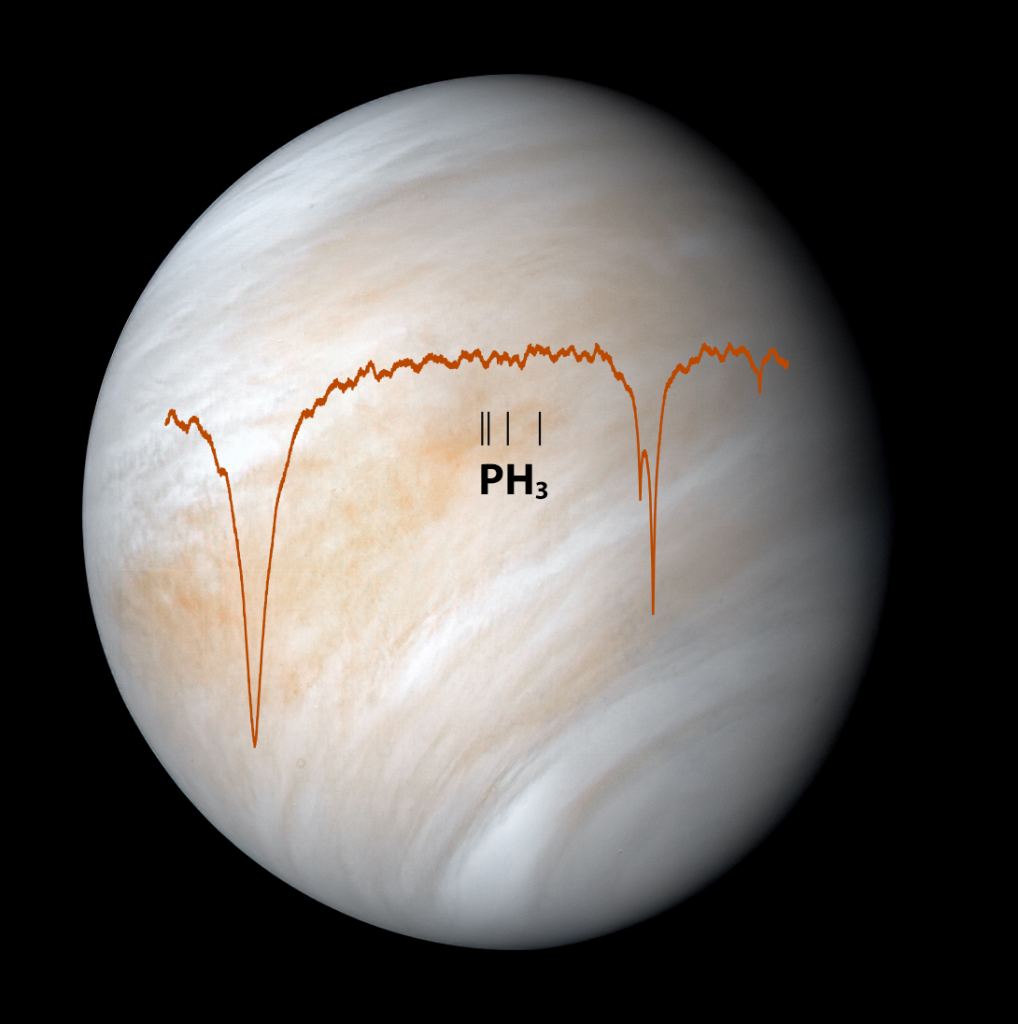The on-again, off-again detection of phosphine in the atmosphere of Venus appears to be off-again – for now. The latest study, based on data from the SOFIA telescope, reveals that the flying observatory didn’t see any signs of phosphine. According to the results, if there is any phosphine present in Venus’s atmosphere at all, it’s a maximum of about 0.
8 parts per billion, much smaller than the initial estimate. However, the team that made the initial detection of phosphine, which was announced in 2020, disagrees with the researchers’ interpretation of the SOFIA data. Cloud structure in the Venusian atmosphere in 2016, revealed by observations in the two ultraviolet bands by Akatsuki.
Credit: Kevin M. Gill Phosphine, a gas that is a potential indicator of life, was a completely unexpected finding for the original team, led by James Greaves of Cardiff University in the UK. The phosphine showed up in low quantities, initially reported at about 20 parts per billion, but that was later revised to 7 or fewer parts per billion after recalibration and new analysis of the data.
But still, that amount was a surprise. Greaves and her team made the data open and available to all, and in just a few weeks, three different studies using the Greaves’ team data questioned the evidence of phosphine in Venus’ atmosphere, while other groups have since confirmed finding evidence for phosphine. The initial detection was based on observations by two Earth-based radio telescopes, the James Clerk Maxwell Telescope (JCMT) in Hawai’i saw it in 2017, and the Atacama Large Millimeter/submillimeter Array (ALMA) radio telescope in northern Chile in 2019.
The amount of phosphine, in addition to the fact that it was detected twice nearly two years apart meant that the phosphine was not only surprisingly abundant but persistent, meaning it must exist with some type of replenishing source. Sunlight or sulfuric acid in the clouds should have annihilated the gas before it could accumulate. In a recent interview with Planetary Radio, Greaves said her team has made a fourth detection of phosphine, again using the JCMT (the paper is forthcoming).
She also said she was anticipating the data from SOFIA. You may have heard about the potential of phosphine on Venus, but new SOFIA data says no. The SOFIA study places a strict upper limit on phosphine in the Venusian atmosphere: if it’s there, there’s very little.
Read more: https://t. co/E7FWhWXEAP pic. twitter.
com/vKrXJFN0bR— SOFIA Telescope (@SOFIAtelescope) November 29, 2022 SOFIA, the Stratospheric Observatory for Infrared Astronomy, is a Boeing 747SP aircraft modified to carry a 2. 7-meter (106-inch) reflecting telescope. Flying into the stratosphere at 13 km (38,000-45,000 feet) puts SOFIA above 99 percent of Earth’s infrared-blocking atmosphere, allowing astronomers to study the universe in ways that are not possible with ground-based telescopes.
This altitude also put the observatory above the area of phosphine in Earth’s own atmosphere, avoiding terrestrial interference. Additionally, the researchers used SOFIA’s German Receiver for Astronomy at Terahertz Frequencies (GREAT) instrument, which high spectral resolution enabled it to be sensitive to phosphine at high altitudes in Venus’s atmosphere, about 45 to 70 miles (about 75 to 110 kilometers) above the ground — the same region as the original finding. The observations were conducted over three flights in November 2021.
NASA’s Stratospheric Observatory for Infrared Astronomy (SOFIA) during a flight in 2010. Credit: NASA According to their interpretation of the data, no evidence for atmospheric PH3 was detected “Phosphine is a relatively simple chemical compound — it’s just a phosphorus atom with three hydrogens — so you would think that would be fairly easy to produce. But on Venus, it’s not obvious how it could be made,” said Martin Cordiner, a researcher in astrochemistry and planetary science at NASA’s Goddard Space Flight Center, in a NASA blog post.
But Greaves et al. quickly put out a rebuttal paper on arXiv after the SOFIA paper was published. “By-passing some instrumental effects, we extract a detection with 6.
5 [omega] confidence from the same data,” Greaves and her team wrote. “We can resolve the tension between detections and deep lower- limits by noticing that the former are from ‘mornings’ in Venus’ atmosphere and the latter from ‘evenings’. Sunlight destroys phosphine in Earth’s atmosphere, so similarly on Venus, we might expect lower abundances in data taken when the part of the atmosphere observed has passed through sunlight.
If the six available datasets can be reconciled in this way, further modelling of possible sources of PH3 (e. g. volcanic, disequilibrium chemistry, extant life) seems worthwhile.
” The question regarding phosphine in Venus’ atmosphere is likely to be debated for some time. Until a spacecraft like NASA’s DAVINCI probe (Deep Atmosphere Venus Investigation of Noble Gases, Chemistry, and Imaging) – expected to get to Venus in the early 2030s — can make in situ observations, the back and forth on this debate will likely continue. The post SOFIA Fails to Find Phosphine in the Atmosphere of Venus, But the Debate Continues appeared first on Universe Today.
.
From: universetoday
URL: https://www.universetoday.com/158983/sofia-fails-to-find-phosphine-in-the-atmosphere-of-venus-but-the-debate-continues/



